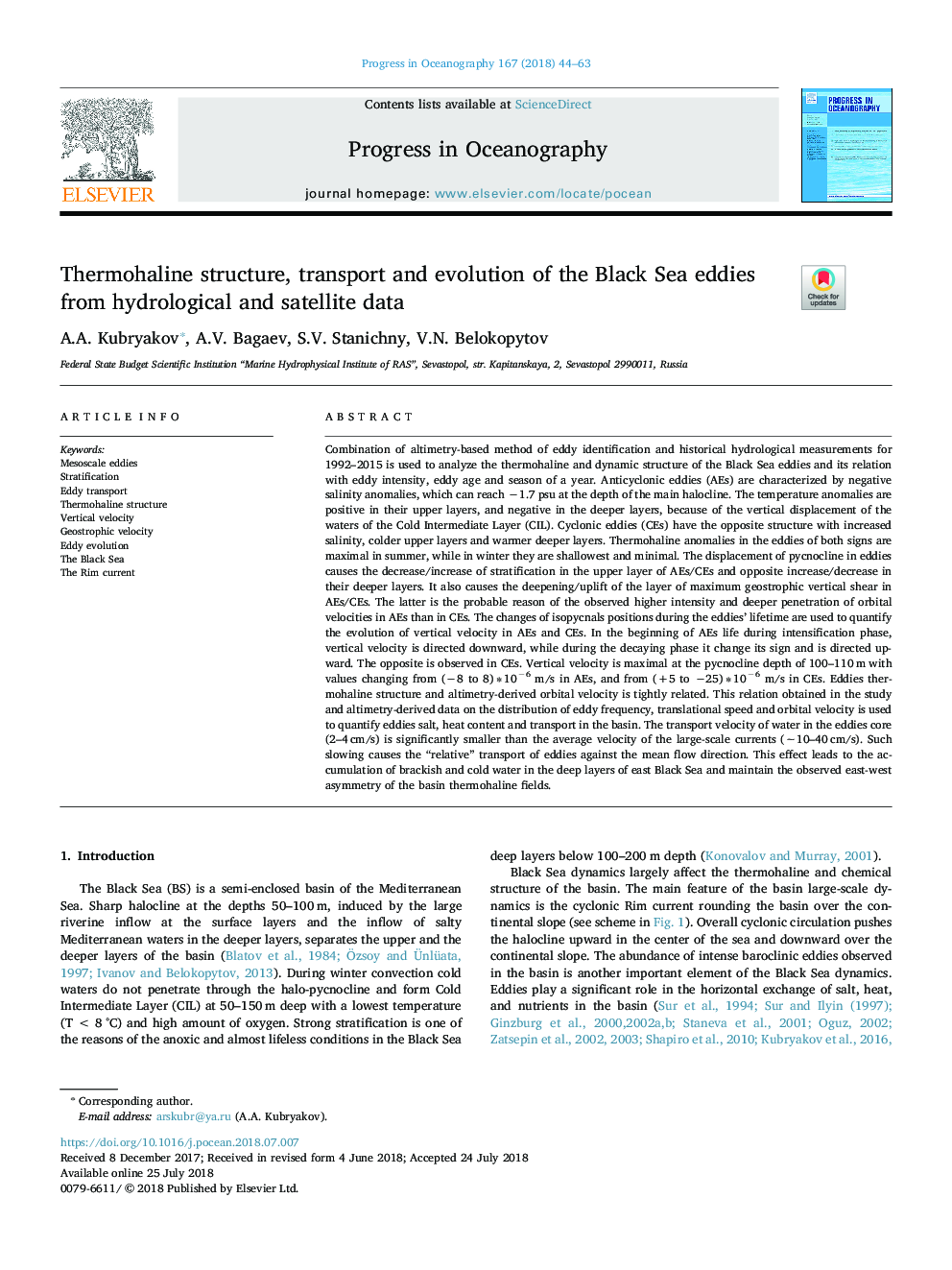| کد مقاله | کد نشریه | سال انتشار | مقاله انگلیسی | نسخه تمام متن |
|---|---|---|---|---|
| 8886575 | 1627891 | 2018 | 20 صفحه PDF | دانلود رایگان |
عنوان انگلیسی مقاله ISI
Thermohaline structure, transport and evolution of the Black Sea eddies from hydrological and satellite data
ترجمه فارسی عنوان
ساختار ترمو هالالی، حمل و نقل و تکامل دریای سیاه در داده های هیدرولوژیکی و ماهواره
دانلود مقاله + سفارش ترجمه
دانلود مقاله ISI انگلیسی
رایگان برای ایرانیان
کلمات کلیدی
موضوعات مرتبط
مهندسی و علوم پایه
علوم زمین و سیارات
زمین شناسی
چکیده انگلیسی
Combination of altimetry-based method of eddy identification and historical hydrological measurements for 1992-2015 is used to analyze the thermohaline and dynamic structure of the Black Sea eddies and its relation with eddy intensity, eddy age and season of a year. Anticyclonic eddies (AEs) are characterized by negative salinity anomalies, which can reach â1.7 psu at the depth of the main halocline. The temperature anomalies are positive in their upper layers, and negative in the deeper layers, because of the vertical displacement of the waters of the Cold Intermediate Layer (CIL). Cyclonic eddies (CEs) have the opposite structure with increased salinity, colder upper layers and warmer deeper layers. Thermohaline anomalies in the eddies of both signs are maximal in summer, while in winter they are shallowest and minimal. The displacement of pycnocline in eddies causes the decrease/increase of stratification in the upper layer of AEs/CEs and opposite increase/decrease in their deeper layers. It also causes the deepening/uplift of the layer of maximum geostrophic vertical shear in AEs/CEs. The latter is the probable reason of the observed higher intensity and deeper penetration of orbital velocities in AEs than in CEs. The changes of isopycnals positions during the eddies' lifetime are used to quantify the evolution of vertical velocity in AEs and CEs. In the beginning of AEs life during intensification phase, vertical velocity is directed downward, while during the decaying phase it change its sign and is directed upward. The opposite is observed in CEs. Vertical velocity is maximal at the pycnocline depth of 100-110â¯m with values changing from (â8 to 8)â¯ââ¯10â6 m/s in AEs, and from (+5 to â25)â¯ââ¯10â6 m/s in CEs. Eddies thermohaline structure and altimetry-derived orbital velocity is tightly related. This relation obtained in the study and altimetry-derived data on the distribution of eddy frequency, translational speed and orbital velocity is used to quantify eddies salt, heat content and transport in the basin. The transport velocity of water in the eddies core (2-4â¯cm/s) is significantly smaller than the average velocity of the large-scale currents (â¼10-40â¯cm/s). Such slowing causes the “relative” transport of eddies against the mean flow direction. This effect leads to the accumulation of brackish and cold water in the deep layers of east Black Sea and maintain the observed east-west asymmetry of the basin thermohaline fields.
ناشر
Database: Elsevier - ScienceDirect (ساینس دایرکت)
Journal: Progress in Oceanography - Volume 167, October 2018, Pages 44-63
Journal: Progress in Oceanography - Volume 167, October 2018, Pages 44-63
نویسندگان
A.A. Kubryakov, A.V. Bagaev, S.V. Stanichny, V.N. Belokopytov,
